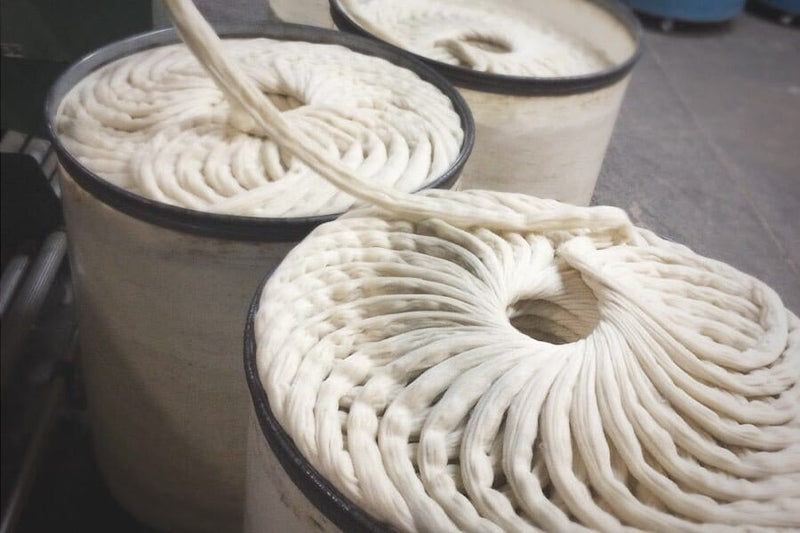
Written by Thomas Lee, Sockwell Partner
If you have ever surfed the internet with an eye towards understanding the process of superwashing or shrink treating wool, there is a good chance you came away confused. While there is accurate information on the superwashing of wool, there are also many misconceptions of the process. Our hope is to clear up the misunderstandings and clarify the benefits, particularly regarding Sockwell and the use of superwashing in our products. We’ll also highlight our partner, Chargeurs, who operates a state-of-the-art, environmentally safe superwashing facility for this important step in making the world’s best socks.
Why is superwashing essential?
Let’s start with the question of what superwashing is and why one would want to superwash wool in the first place. It is important to understand that wool fiber in its natural state has scales on the outside of the fibers. These scales provide natural protection to the fiber when on a sheep, but are not necessarily beneficial to the fiber when being used in a sock. The spinning process for wool yarn involves laying wool fibers side-by-side, and if the fiber is not superwashed or otherwise shrink treated, the scales on one fiber have a tendency to get locked up with the scales of the adjacent fibers. As the fibers become locked together, the natural stretching of the yarn and the associated garment tend to become restricted.
This process is called felting, and you can think of it in terms of considering a felted wool hat, such as a cowboy hat. While a lack of stretch may be desirable for a cowboy hat, it certainly is not something you would want in a sock. A well-fitting merino wool sock needs a bit of stretch and recovery, which superwashed wool can provide.
The sustainable approach to superwashing wool
There are many shrink treatment methods for wool, and not all of them are created equal. At Sockwell, we care about our planet and are mindful of our environmental impact at every step in our supply chain.
We have a super compact carbon footprint, smaller than any of our competitors. Our wool is grown in America and is also processed and spun into yarn here in the United States. Our superwashing is done at our partner plant in South Carolina using state-of-the-art methods that have no negative environmental impact. In fact, the water used in the superwashing process is cleaner when it leaves the plant than when it entered.
Chargeurs employees a state-of-the-art, environmentally conscious superwashing method.
- Wool fibers are introduced to a chlorine gas inside a bath of water to remove the edges of the scales from the fiber.
- There is just enough chlorine used in the process that nearly all of it is exhausted during the treatment process.
- Little–if any–of the chlorine gas escapes, but if it does, the gas is trapped by a hood and scrubbed out of the air.
- Due to the chlorine treatment process, the water leaving our superwashing process is even cleaner and safer than the water that entered it.


1: Chargeurs' state-of-the-art superwashing facility • 2: Chlorine gas is trapped by a hood and scrubbed out of air.
*Note: Chlorine is used daily to treat water and help make it safe for you and me to drink.
Superwashing’s benefits dramatically enhance the performance characteristics of wool yarns, and when done safely, the shrink treatment process has no negative environmental impact. Sockwell’s high-quality, wool blend socks provide you with an unmatched experience of Feeling Better in Style. Not only will the fit and performance be superior, but every sock–down to its fiber–was made with concern for our beautiful planet.



